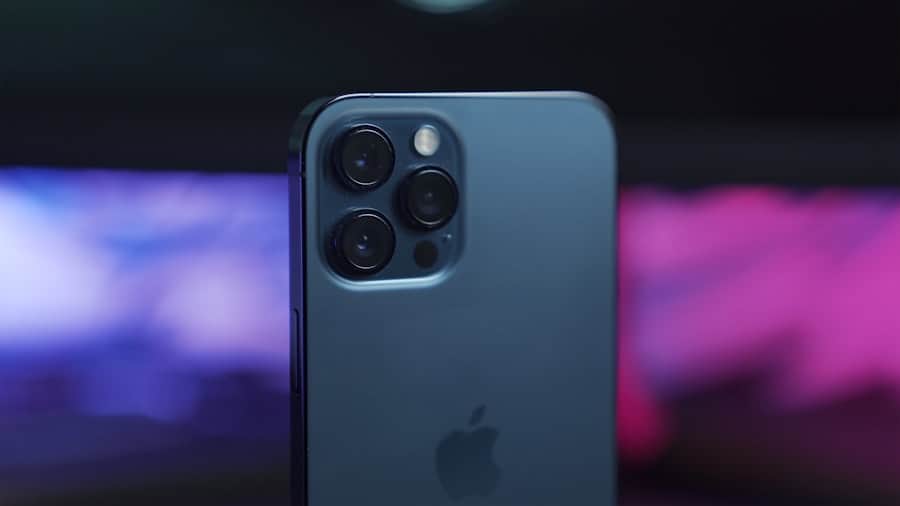The advent of artificial intelligence (AI) has revolutionized numerous industries, and surveillance systems are no exception. AI-powered smart cameras represent a significant leap forward in the realm of security technology, combining traditional video surveillance with advanced machine learning algorithms. These cameras are not merely passive recording devices; they are equipped with the ability to analyze video feeds in real-time, recognize patterns, and make decisions based on the data they collect.
This transformative capability allows for a more proactive approach to security, enabling organizations to respond to incidents as they unfold rather than merely reviewing footage after the fact. The integration of AI into smart cameras has led to a paradigm shift in how surveillance is conducted.
In contrast, AI-powered cameras can continuously analyze vast amounts of data without the limitations of human attention spans. This technology can identify unusual behaviors, detect intrusions, and even recognize faces or license plates, providing a level of situational awareness that was previously unattainable. As cities and businesses increasingly turn to these advanced systems, understanding their capabilities and implications becomes essential.
Key Takeaways
- AI-powered smart cameras use artificial intelligence to enhance surveillance capabilities
- Advantages of using AI-powered smart cameras include real-time threat detection and reduced false alarms
- AI technology enhances smart cameras by enabling facial recognition and object detection
- AI-powered smart cameras have a significant impact on crime prevention and security measures
- Challenges and limitations of AI-powered smart cameras include privacy concerns and potential biases in data analysis
Advantages of using AI-powered smart cameras in surveillance systems
One of the most significant advantages of AI-powered smart cameras is their ability to enhance situational awareness through real-time analytics. These cameras can process video feeds on-site, allowing them to detect anomalies or suspicious activities as they occur. For instance, if a person enters a restricted area or behaves erratically, the system can immediately alert security personnel, enabling a swift response.
This capability not only improves the effectiveness of surveillance but also reduces the likelihood of incidents escalating due to delayed reactions. Moreover, AI-powered smart cameras can significantly reduce the amount of data that needs to be reviewed by human operators. Traditional surveillance systems generate vast amounts of footage that can be overwhelming to sift through, especially in high-traffic areas.
AI algorithms can filter this data by identifying relevant events or behaviors, allowing security teams to focus their attention on critical incidents rather than wading through hours of mundane footage. This efficiency not only saves time but also enhances the overall effectiveness of security operations.
How AI technology enhances the capabilities of smart cameras
AI technology enhances the capabilities of smart cameras through various sophisticated techniques, including object detection, facial recognition, and behavior analysis. Object detection algorithms enable these cameras to identify and classify objects within their field of view, distinguishing between people, vehicles, and other items of interest. This capability is particularly useful in crowded environments where distinguishing between different entities is crucial for effective monitoring.
Facial recognition technology is another powerful feature of AI-powered smart cameras. By comparing captured images against databases of known individuals, these systems can identify persons of interest or alert authorities if a wanted criminal is detected. This application has been particularly beneficial in public safety initiatives, where law enforcement agencies can leverage this technology to enhance their investigative capabilities.
However, it is essential to note that while facial recognition can improve security measures, it also raises significant ethical and privacy concerns that must be addressed. Behavior analysis is yet another area where AI significantly enhances smart camera capabilities. By employing machine learning algorithms trained on vast datasets, these cameras can learn what constitutes normal behavior in a given environment and flag deviations from this norm.
For example, if an individual is loitering in a specific area for an extended period or engaging in aggressive movements, the system can trigger alerts for security personnel to investigate further. This proactive approach allows for early intervention and can prevent potential incidents before they escalate.
The impact of AI-powered smart cameras on security and crime prevention
The impact of AI-powered smart cameras on security and crime prevention is profound and multifaceted. By providing real-time insights and alerts, these systems empower security personnel to act swiftly and effectively in response to potential threats. For instance, in urban environments plagued by crime, the deployment of AI-driven surveillance can lead to a noticeable reduction in criminal activity.
Furthermore, the deterrent effect of visible surveillance cannot be understated. The knowledge that AI-powered cameras are monitoring an area can dissuade potential criminals from engaging in illicit activities.
This psychological barrier is particularly effective in public spaces such as parks, shopping centers, and transportation hubs where foot traffic is high. The presence of these advanced systems not only enhances actual security measures but also fosters a sense of safety among the public.
Challenges and limitations of AI-powered smart cameras in surveillance
Despite their numerous advantages, AI-powered smart cameras are not without challenges and limitations. One significant concern is the potential for false positives—instances where the system incorrectly identifies benign behavior as suspicious. Such errors can lead to unnecessary investigations or even wrongful accusations, undermining public trust in surveillance technologies.
Continuous improvement of algorithms through machine learning is essential to minimize these occurrences; however, achieving high accuracy rates remains a complex task. Another challenge lies in the integration of AI-powered smart cameras with existing infrastructure. Many organizations may have invested heavily in traditional surveillance systems that lack the capabilities offered by modern AI technologies.
Upgrading these systems can be costly and logistically challenging, particularly for large-scale implementations across multiple locations. Additionally, there may be resistance from employees or stakeholders who are concerned about the implications of increased surveillance on privacy and workplace dynamics.
Case studies of successful implementation of AI-powered smart cameras
Here is the rewritten text with 3-4 AI-Powered Smart Cameras in Action
### Public Safety and Law Enforcement
The city of Los Angeles has successfully integrated AI-driven surveillance into its public safety strategy. The Los Angeles Police Department (LAPD) has deployed smart cameras equipped with facial recognition technology in high-crime areas. This initiative has led to a significant increase in the identification and apprehension of suspects involved in violent crimes, demonstrating the effectiveness of AI in enhancing law enforcement capabilities.
### Retail and Customer Experience
In another instance, a major retail chain implemented AI-powered smart cameras across its stores to combat theft and improve customer service. The system was designed to analyze customer behavior patterns and identify potential shoplifting incidents in real-time. By alerting store personnel when suspicious behavior was detected, the retailer was able to reduce shrinkage rates significantly while also enhancing the overall shopping experience for customers.
### Dual Benefits of AI Technology
This dual benefit highlights how AI technology can be leveraged not only for security purposes but also for operational efficiency. The successful implementation of AI-powered smart cameras across various sectors demonstrates the potential of AI to drive positive change and improve outcomes in different areas.
Future developments and trends in AI-powered smart cameras for surveillance
The future of AI-powered smart cameras is poised for continued innovation and expansion as technology evolves. One emerging trend is the integration of edge computing capabilities into these devices. By processing data locally rather than relying solely on cloud-based solutions, edge computing can enhance response times and reduce latency issues associated with real-time analytics.
This advancement will be particularly beneficial in scenarios where immediate action is required, such as during active threats or emergencies. Additionally, advancements in deep learning algorithms will further enhance the accuracy and reliability of AI-powered smart cameras. As these systems become more adept at understanding complex scenarios and differentiating between normal and abnormal behaviors, their effectiveness will increase significantly.
Furthermore, as privacy regulations evolve globally, manufacturers will need to develop solutions that balance security needs with ethical considerations surrounding data collection and usage.
Ethical considerations and privacy concerns related to AI-powered smart cameras
The deployment of AI-powered smart cameras raises critical ethical considerations and privacy concerns that must be addressed proactively. One primary issue is the potential for mass surveillance and its implications for civil liberties. The pervasive use of facial recognition technology has sparked debates about individual rights and the potential for misuse by authorities or private entities.
Ensuring transparency in how data is collected, stored, and utilized is essential to maintain public trust. Moreover, there are concerns regarding data security and the potential for breaches that could expose sensitive information collected by these systems. Organizations must implement robust cybersecurity measures to protect against unauthorized access and ensure compliance with data protection regulations such as GDPR or CCPEngaging with stakeholders—including community members—during the implementation process can help address concerns and foster a collaborative approach to surveillance that respects individual rights while enhancing public safety.
As society continues to navigate the complexities introduced by AI technologies in surveillance systems, it will be crucial to strike a balance between leveraging these advancements for security purposes while safeguarding privacy rights and ethical standards. The ongoing dialogue surrounding these issues will shape the future landscape of AI-powered smart cameras and their role in society.
There is an interesting article on enicomp.com about the game-changing keyword research tool, RankAtom. This tool could be highly beneficial for companies looking to improve their online presence and SEO strategies. To read more about it, check out RankAtom Review: The Game-Changing Keyword Research Tool.
FAQs
What are AI-powered smart cameras?
AI-powered smart cameras are surveillance cameras equipped with artificial intelligence technology that enables them to analyze and interpret the visual data they capture. These cameras can detect and recognize objects, people, and activities, and can be programmed to send alerts or trigger specific actions based on the analysis of the visual data.
How do AI-powered smart cameras improve surveillance systems?
AI-powered smart cameras improve surveillance systems by providing more accurate and efficient monitoring and analysis of visual data. They can detect and recognize objects and activities in real-time, reducing the need for human monitoring and intervention. This can lead to quicker response times and more effective security measures.
What are the benefits of using AI-powered smart cameras in surveillance systems?
Some benefits of using AI-powered smart cameras in surveillance systems include improved accuracy in detecting and recognizing objects and activities, reduced false alarms, enhanced security and safety, and increased efficiency in monitoring and analyzing visual data. These cameras can also be integrated with other security systems and technologies for a more comprehensive surveillance solution.
What are some applications of AI-powered smart cameras in surveillance systems?
AI-powered smart cameras are used in various surveillance applications, including public safety and security, traffic monitoring, retail and commercial security, industrial and manufacturing monitoring, and smart city initiatives. These cameras can be deployed in both indoor and outdoor environments to enhance security and monitoring capabilities.



